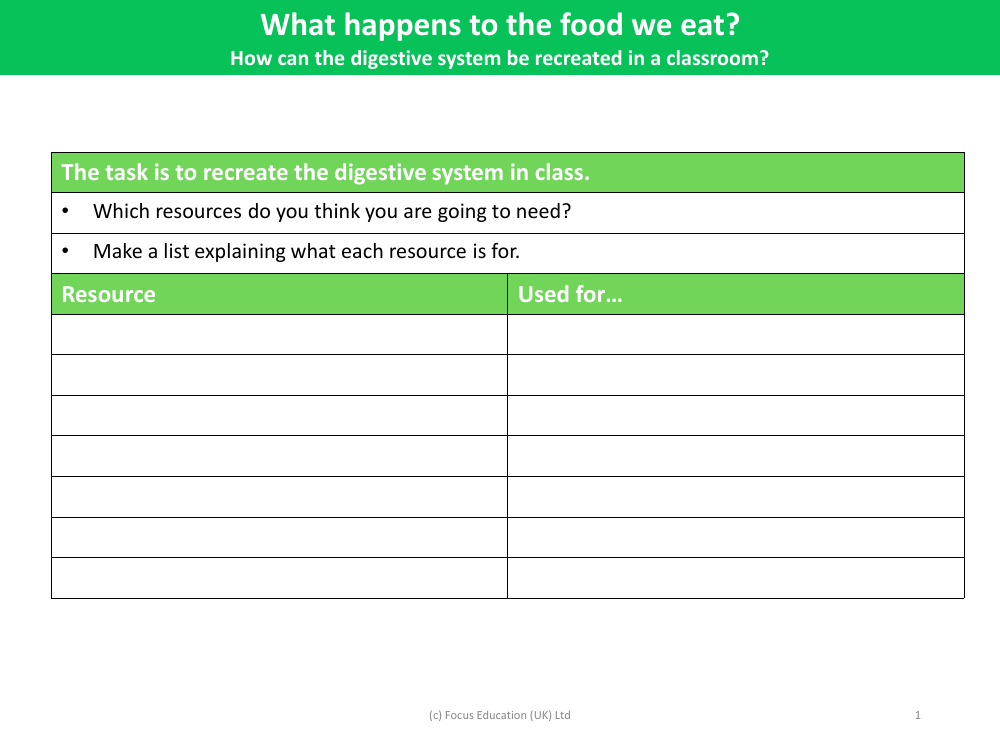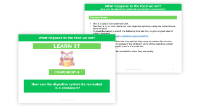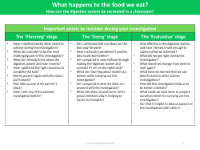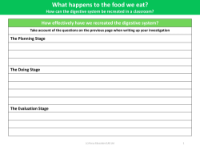Recreate the digestive system in the classroom - Planning sheet

Science Resource Description
To recreate the digestive system in a classroom, a variety of resources will be required to simulate each part of the digestive process. These resources should be safe, accessible, and represent the functions of the digestive system components in a way that is understandable for students. The following list outlines potential resources and their intended uses:
Resource: Coloured playdough or modelling clay - Used for creating models of different types of food to demonstrate the variety of substances that the digestive system processes.
Resource: Clear plastic tubing - Used to represent the esophagus and intestines, illustrating the pathway that food takes from the mouth to the stomach and through the intestines.
Resource: Balloons or plastic bags - Used to simulate the stomach and the expansion that occurs as food enters and is mixed with digestive juices.
Resource: Water and food colouring - Used to represent the various digestive juices, such as saliva, stomach acid, and bile, which are crucial for breaking down food.
Resource: Sieve or mesh - Used to simulate the filtering process of the small intestine, where nutrients are absorbed into the bloodstream.
Resource: Tights or stockings - Used to represent the large intestine, showing how it compacts waste material in preparation for excretion.
Resource: Zip-lock bags or containers - Used to collect the 'waste' at the end of the digestive process, demonstrating the body's method of excretion.
By using these resources, students can gain a visual and tactile understanding of what happens to the food we eat as it travels through the digestive system. The recreation of the digestive system in the classroom allows for an interactive and engaging learning experience, which can enhance students' comprehension of human biology.





